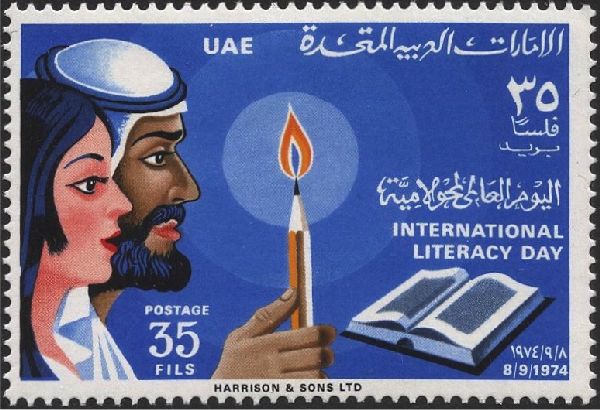The United Arab Emirates (UAE), simply the Emirates, is a country in Eastern Arabia, located at the eastern end of the Arabian Peninsula.
Human occupation has been traced back to the emergence of anatomically modern humans from Africa some 124,000 BCE through finds at the Faya-2 site in Mleiha, Sharjah. Burial sites dating back to the Neolithic Age and the Bronze Age include the oldest known such inland site at Jebel Buhais. Known as Magan to the Sumerians, the area was home to a Bronze Age trading culture during the Umm Al Nar period which traded between the Indus Valley, Bahrain and Mesopotamia as well as Iran, Bactria and the Levant. The ensuing Wadi Suq period and three Iron Ages saw the emergence of nomadism as well as the development of water management and irrigation systems supporting human settlement in both the coast and interior.
The Islamic age of the UAE dates back to the expulsion of the Sasanians and the subsequent Battle of Dibba. The UAE’ history of trade led to the emergence of Julfar in the present-day emirate of Ras Al Khaimah as a regional trading and maritime hub in the area. The maritime dominance of the Persian Gulf by Emirati traders led to conflicts with European powers, including the Portuguese Empire and the British Empire.
Following decades of maritime conflict, the coastal emirates became known as the Trucial States with the signing of the General Maritime Treaty with the British in 1820 (ratified in 1853 and again in 1892), which established the Trucial States as a British protectorate.
With the expansion of European colonial empires, Portuguese, English and Dutch forces appeared in the Persian Gulf region. By the 18th century, the Bani Yas confederation was the dominant force in most of the area now known as Abu Dhabi, while the Northern Al Qawasim (Al Qasimi) dominated maritime commerce. The Portuguese maintained an influence over the coastal settlements, building forts in the wake of the 16th-century conquests of coastal communities.
The southern coast of the Persian Gulf was known to the British as the Pirate Coast as boats of the Al Qawasim federation harassed British-flagged shipping from the 17th century into the 19th. British expeditions to protect their Indian trade routes led to campaigns against Ras Al Khaimah and other harbours along the coast, including the Persian Gulf Campaign of 1809 and the campaign of 1819. The following year, Britain and a number of local rulers signed a maritime truce giving rise to the term Trucial States which came to define the status of the coastal emirates. A further treaty was signed in 1843 and in 1853 the Perpetual Treaty of Maritime Truce was agreed. To this was added the ‘Exclusive Agreements’ signed in 1892 which made the Trucial States a British protectorate.
Under the 1892 treaty, the trucial sheikhs agreed not to dispose of any territory except to the British and not to enter into relationships with any foreign government other than the British without their consent. In return, the British promised to protect the Trucial Coast from all aggression by sea and to help in case of land attack. The Exclusive Agreement was signed by the Rulers of Abu Dhabi, Dubai, Sharjah, Ajman, Ras Al Khaimah and Umm Al Quwain between 6 and 8 March 1892.
By 1966, it had become clearer that the British government could no longer afford to administer and protect what is now United Arab Emirates. On 24 January 1968, British Prime Minister Harold Wilson announced the government’s decision, reaffirmed in March 1971 by Prime Minister Edward Heath, to end the treaty relationships with the seven Trucial Sheikhdoms, that had been, together with Bahrain and Qatar, under British protection.
Originally intended to be part of the proposed Federation of Arab Emirates, Bahrain became independent in August, and Qatar in September 1971. When the British-Trucial Sheikhdoms treaty expired on 1 December 1971, both emirates became fully independent. On 2 December 1971, at the Dubai Guesthouse (now known as Union House) six of the emirates (Abu Dhabi, Ajman, Dubai, Fujairah, Sharjah and Umm Al Quwain) agreed to enter into a union called United Arab Emirates. Ras al-Khaimah joined it later, on 10 January 1972. UAE joined the Arab League on 6 December 1971 and the United Nations on 9 December.
Blogs
- Emirates Philatelic Association
- Emirates Philatelic Association
- Emirates Philatelic Association (Group)
- Emirates Post
- Emirates Philately – @emiratesstamps
- Emirates Post – @EmiratesPostUAE








